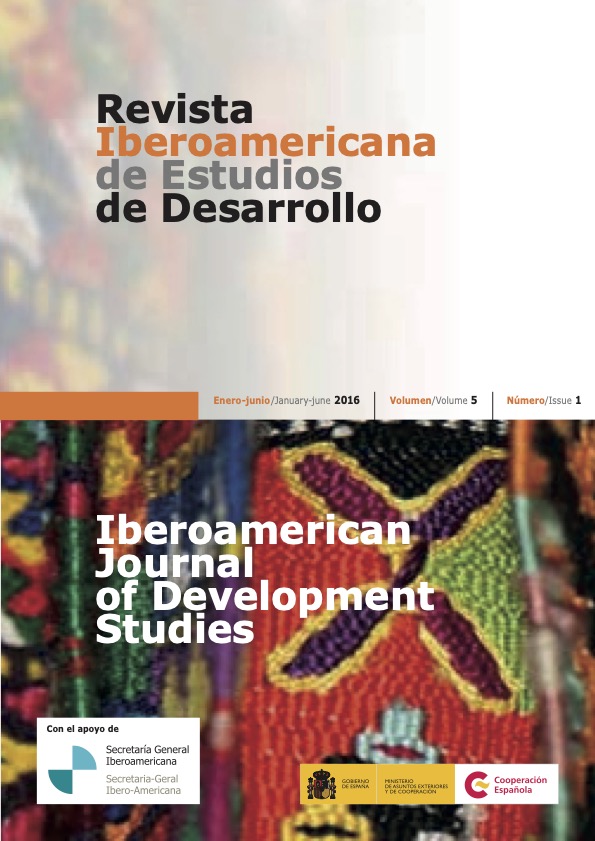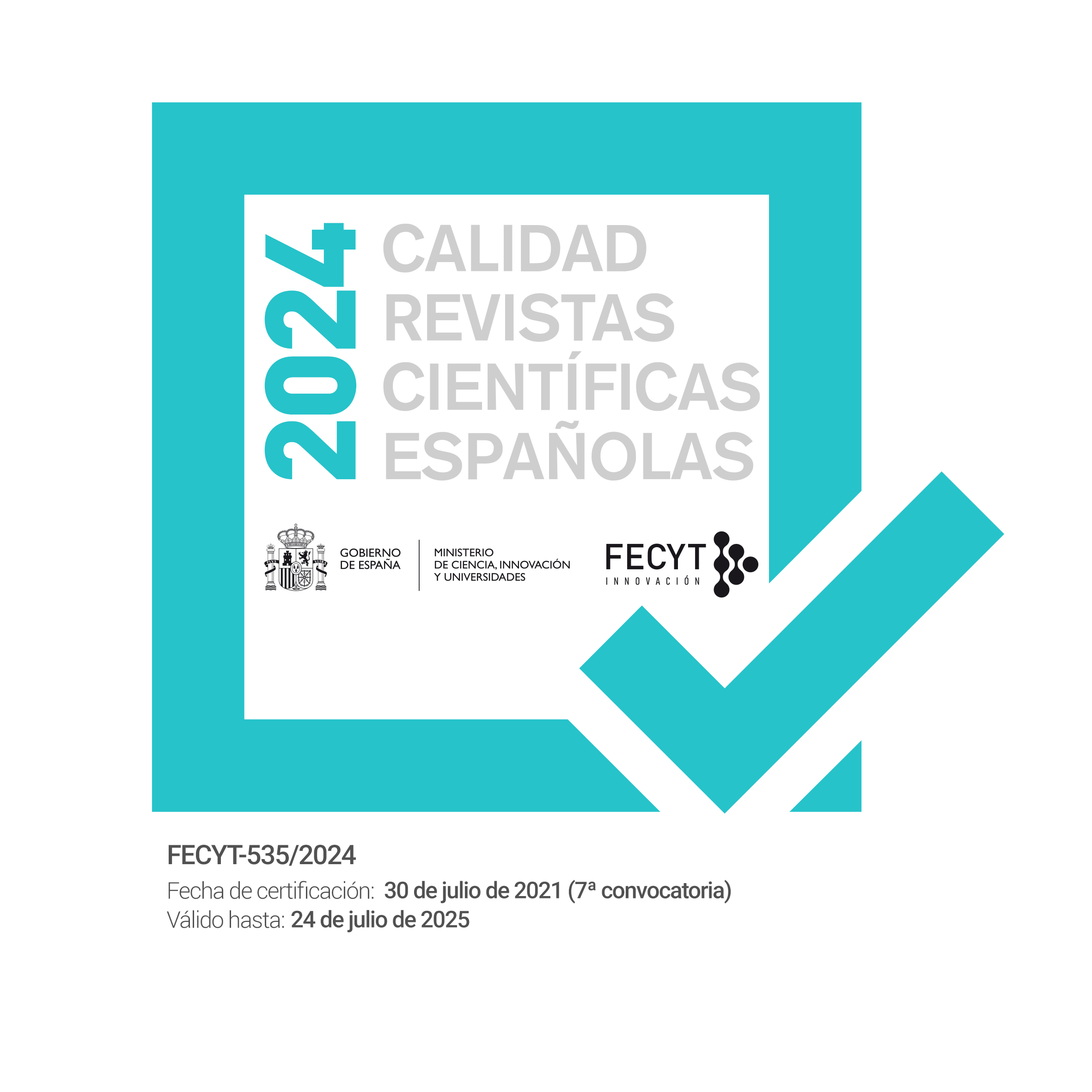Inequality and Mortgage Debts in Colombia
DOI:
https://doi.org/10.26754/ojs_ried/ijds.177Keywords:
economic inequality, mortgage debt, asset interest rates, price of low status housingAbstract
This article examines the impact of internal variables of the financial system (FS) regarding the economic inequality in Colombia during the 1993 through the 2010 period. It begins with the integration of two perspectives about the inequality induced by financial debts and the social responsibility of the FS. This investigation was done with an auto-regressive and distributed backwardness model, and a Granger Test. The results indicate that the economic inequality grows if the mortgage debt, the real estate dations as payment of debts, and the banking asset interest rates grow. Likewise, if the price of low status housing decreases, the economic inequality increases.
Downloads
References
ARRAZATE R (2010). Responsabilidad social en el sector bancario: Un estudio de caso. Administración y Organizaciones. 11(2):105-128. México.
BALDACCI E, DEMELLO L, INCHAUSTE G (2002). Crisis financieras, pobreza y distribución del ingreso. Revista Finanzas & Desarrollo 40(2):24-27. Washington.
BANCO DE LA REPÚBLICA (2012). Serie de tiempo TIA y pasivo 1993-2010. Bogotá.
BANCO MUNDIAL (2006). Informe sobre el desarrollo mundial. Washington.
BECK T, DEMIRGUC-KUNT A, LAEVEN L (2007). Finance, Firm Size, and Growth.
BEHRMAN JR, BIRDSALL N, SZÉKELY M (2001). Pobreza, Desigualdad, y liberalización comercial y financiera en América Latina. Nueva York.
CANAVIRE-BACARREZA Y RIOJA (2009). Financial Development and the Distribution of Income in Latin America and the Caribbean. Discussion Paper No. 3796.
CEPAL (2014). Anuario estadístico de América Latina y el Caribe. Santiago de Chile. http://www.cepal.org/es/publicaciones/925-anuario-estadistico-de-americalatina-y-el-caribe-2010-statistical-yearbook-latin . Mayo de 2012.
CHAMBERS C, DAY R (2009). The Banking Sector and CSR: An Unholy Alliance? Financial Regulation International 12(9):13-20.
CORTE CONSTITUCIONAL (2002). Sentencia T-1085/02 Magistrado ponente Araújo Rentería. Bogotá.
CORTE CONSTITUCIONAL (2010). Sentencia C-228/10 Magistrado Ponente: Dr. Luis Ernesto Vargas Silva. Bogotá.
CUESTA M, MUÑOZ-TORRES MJ, FERNÁNDEZ-IZQUIERDO MA (2006). Analysis of Social Performance in the Spanish Financial Industry Through Public Data. A Proposal. Journal of Business Ethics 69:289-304.
DEPARTAMENTO NACIONAL DE PLANEACIÓN (2012). Serie de tiempo GINI 1993- 2010. Bogotá.
DEPARTAMENTO NACIONAL DE PLANEACIÓN (2012). Serie de tiempo precios de VIS 1993-2010. Bogotá.
FERNÁNDEZ B, DE LA CUESTA M (2014). Evaluación de impactos ambientales y sociales del negocio de banca comercial en Europa durante el período 2006- 2010. Revista de Estudios de Economía Aplicada 32(2):567-592. Mayo de 2014.
FISHER I (1933). Debt-Deflation theory of Great Depression. Econometrica.
GONZÁLEZ R (2007). Economía, política y cultura de la desigualdad de ingresos en Chile. Santiago de Chile. http://rcientificas.uninorte.edu.co/index.php/economia/ article/viewFile/548/290. Septiembre de 2012.
GUISÁN MC (2008). Causalidad e integración en modelos econométricos. España.
IACOVIELLO M (2008). Household Debt and Income Inequality, 1963-2003. Journal of Money, Credit and Banking 40(5):929-965.The Ohio State University.
INSULZA JM (2011). Desigualdad, democracia e inclusión Social en Desigualdad e inclusión social en las Américas: 13 ensayos. Organization of American States. Secretary General. Washington.
KUMHOF M, RANCIÈRE R (2010). La deuda apalanca la desigualdad. Revista Finanzas & Desarrollo 48(3):25-27.Washington. LÓPEZ H (2010). Pro-poor growth: a review of what we know (and of what we don’t). The World Bank.
MARÓN M (2013). El desarrollo financiero y su impacto en la desigualdad económica (2013). Universidad Iberoamericana.
MINSKY H (1999). Ondas largas en las relaciones financieras: factores financieros de las depresiones más severas. En problemas del desarrollo 30(119):175-188.
MURILLO G, GONZÁLEZ C, RODRÍGUEZ H (2010). Responsabilidad social corporativa en el contexto del cambio institucional y organizacional de la industria financiera en Colombia. Seminario Sostenibilidad y Gestión. Universidad EAFIT Medellín 1:60-85.
OIT (2008). Informe sobre el trabajo en el mundo 2008.
PROGRAMA DE LAS NACIONES UNIDAS PARA EL DESARROLLO (2014). Humanidad dividida: Cómo hacer frente a la desigualdad en los países en desarrollo. Nueva York.
ROSALES ÁLVAREZ RA et al. (2010). Fundamentos de Econometría intermedia: teoría y aplicaciones. Bogotá.
SARRO M, CUESTA P, PENELAS A (2007). La Responsabilidad Social Corporativa, una orientación emergente en la gestión de las entidades bancarias españolas 1(1). (s. f.) por (2007).
SCHOLTENS B (2009). Corporate Social Responsibility in the International Banking Industry. Journal of Business Ethics 86:159-175.
SEN A (2002). El nuevo examen de la desigualdad. Madrid. SIRO P (1551). Sentencias. Madrid.
STIGLITZ, J (2012). El Precio de la Desigualdad. Bogotá.
SUPERINTENDENCIA FINANCIERA DE COLOMBIA (2003). Concepto No. 2003027965-1. Bogotá.
SUPERINTENDENCIA FINANCIERA DE COLOMBIA (2012). Serie histórica de los estados financieros de los bancos. Bogotá.
Downloads
Published
How to Cite
Issue
Section
License
Copyright (c) 2016 Yolanda Guerrero-Pino

This work is licensed under a Creative Commons Attribution-NonCommercial-NoDerivatives 4.0 International License.








